 Prussian Kingdom’s Navy 1700-1870
Prussian Kingdom’s Navy 1700-1870
The roots of today’s Bundesmarine are stretched over centuries and a complicated local history with the German culture as only common denominator. Germany was traditionally a land power with only a few states bordering the Baltic sea harnessing trade and war from the Medieval era onwards. The Hanseatic League was probably the first global trade corporation, dominating the Baltic with major ports from actual Poland to Denmark. Hamburg was among the largest and best known. The largest and arguably most powerful Nation inside the German confederation, inheritance of the Holy Roman Empire, was Prussia. That’s why many historians links the Royal Prussian Navy at the root of the Kaiserliches Marine born from the unification in 1870. The latter was disbanded in 1918 after the fall of the regime. Reborn as the Reichsmarine in the interwar, it became the Kriegsmarine from 1933 to 1945, and then the Bundesmarine, with its east-German mirror, the Volksmarine until 1990. A complicated history and a Navy that started to be part of the big players in Europe after 1880.
Origins of the Prussian Navy
The Brandenburg Navy
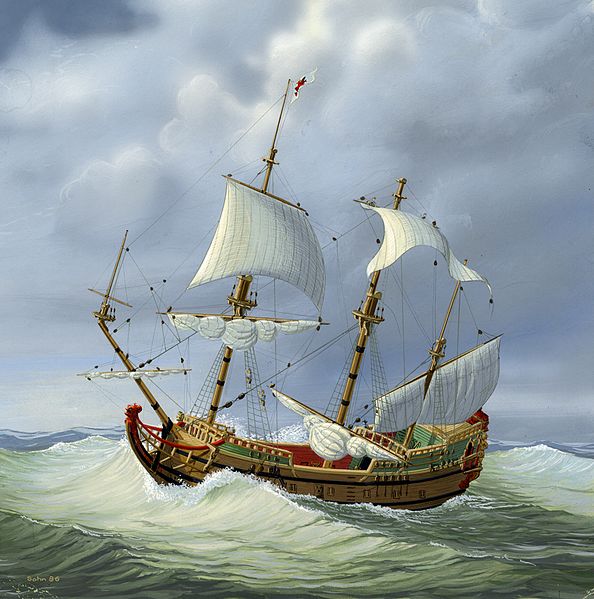
The 1686 Frigate Berlin, Electorate of Brandenburg’s flagship.
Well before Prussia became the infamous “army which owns a state”, the Prussian Kingdom did not existed yet, its own Brandenburg Navy was created to defend the ports and trade from the Electorate of Brandenburg, predecessor of the Kingdom of Prussia. This navy was founded in the 16th century. From 1657 onwards, Elector Frederick William (the “Great Elector”) bolstered the naval forces into a proper blue-water navy, meaning including first rank vessels. The Elector in fact made navigation and commerce state priorities. Due to the lack of experience in naval construction and facilities, ships were purchased aboard. One of the goals was to joined the new ongoing race for overseas colonies. Brandenbur thus soon becale involved in the Atlantic slave trade making the need for a powerful navy even more pressing. He passed out however and his grandson Frederick William I showed interest in colonial affairs or maintaining a navy, switching on the Prussian Army. In 1721, Frederick I sold the Brandenburger Gold Coast to the Dutch West India Company, obtaining 7,200 ducats, ending the only colony of what was now Prussia (since 1701) andf the drea of a blue-water navy, which dwindled rapidly.
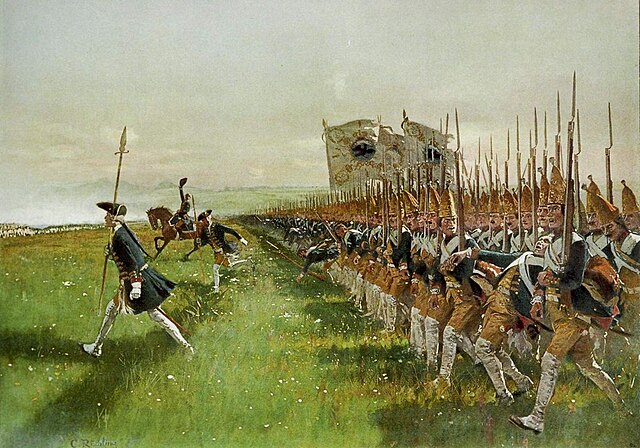
Prussian kings following Frederick I showed little interest in the navy mostly due to continental strategy and no defensible natural borders, notably against Austria or France. For Frederick II (the great/Der Grösse), Prussia had to concentrate all means in its military preparations. More so, by pulling the right strings with Denmark and the Netherlands, there was no need to be afraid of a blockade. In fact he professed the will never to develop its own war fleet, preferring asking the Danes and Dutch to secure Prussian sea trade lines. Due to the concentration of skills and assets in the army, at the time arguably the best in Europe at least in quality as demonstrated, the new kingdom could never hope to equal Britain, France, or the the Dutch Republic’s own navies and even those from Spain, Sweden, Denmark or Russia.


1848 Prussian Frigates of the Diamond class.
Prussia had at the time 13 “makeshift warships” Galleys, Galiots and Gunboats which took part in Seven Years’ War, still. Without surprise rhis small force was crused at the battle of Frisches Haff in September 1759 by the Sweded. The Swedes occupied Usedom and Wollin. In 1760 a new flotilla was reconstituted, which defended the coast until the end of the war in 1763. Postwar, Frederick II reconsidered the question and wanted to take part in international maritime commerce. Several trading firms were created like the Emden Company (“Royal Prussian Asiatic Company”) in Emden to trade with Canton and China and had four armed ships (to deal with pirates) from 1751 to 1757. The Preußische Seehandlung was created in French as the “Societé de Commerce maritime” in 1772, still a foundation today.
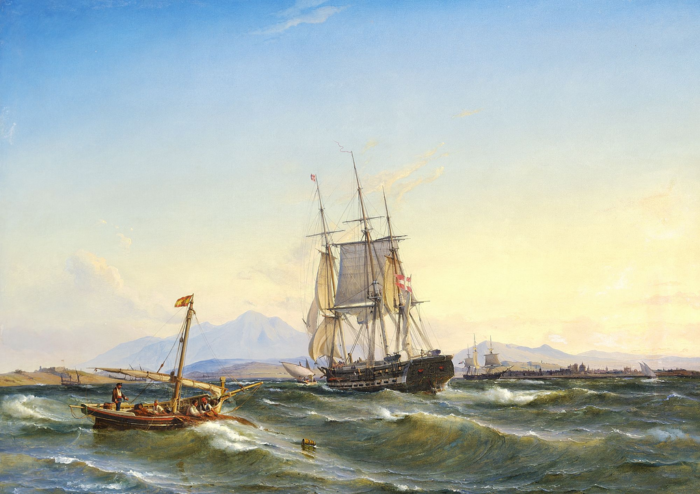
The Prussian Frigate SMS Karl Friedrich at Funchal, Azores, in 1848
After the end of the Napoleonic Wars, Prussia created a new small fleet for coastal defense but it was an afterthough after the development of a merchant fleet. These ships were basically indiamans, heavily armed still and trained to deal with pirates, and they flew the Prussian war ensign around 1850. Prince Adalbert of Prussia woulkd soon play a pivotal role in creating the navy, which had a few 3rd rank sailing frigates built in Britain (1848 HMS Diamond design). Prince Adalbert went abroad to UK and the Netherlands, and returned convinced of supporting commercial interests and navigation with a poper blue water fleet. The Revolutionary era of 1848–1852 saw the Frankfurt National Assembly promoting the prince into creating from scratch the Imperial Fleet (Reichsflotte) notably because relations degraded fast with Denmark.
The German Confederation at the time for naval construction depended on Great Britain, the Netherlands, and Denmark and that was shown in the First War of Schleswig of 1848–1851. Great Britain and the Netherlands remained neutral, refusing to sell the Prussians any vessels while Denmark was evidently now an enemy. The Danish Navy swarved the Prussians and soon halted German maritime trade, taking control of both the North and Baltic Seas. Austria was Prussia’s ally and took time to intervene in reinforcement.
After the failure of the Revolutions of 1848, Prince Adalbert resume his work on the Prussian Navy ordered first the construction of warships and naval education/training facilities and in the 1855s, new steam-powered Prussian corvettes and frigates were now operational. Alongside the Prince were other founding figures, naval officers Karl Rudolf Brommy and Ludwig von Henk, the latter a future admiral in the Imperial German Navy. In between the war of 1866 was a serious test for the yound navy. In 1864 Prussian vessels reinforcd by the Austrian navt fought a numerically superior Danish Navy in Jasmund and Heligoland, and lost. After the Austro-Prussian War of 1866 Northern German states allied under Prussian leadership as what was the “North German Confederation” but it was difficult to ask them a contribution for the Navy.
The first naval base was established on the North Sea via the Jade Treaty (Jade-Vertrag) of 1853 with the Grand Duchy of Oldenburg to cede the Jade District and create a new port from scratch soon to be name Wilhelmshaven (lit. “William’s Harbour”) in 1869.
Then came the Franco-Prussian War where the Prussian navy was once again in stark inferiority. After its conclusion what was the Prussian Royal Navy became the Imperial Navy, nown financed by contributions from across the new German Empire. The Kaiserliches Marine now had the means of its ambitions, but that’s another story.
From the Unification to Whilhelm II
Towards the unification
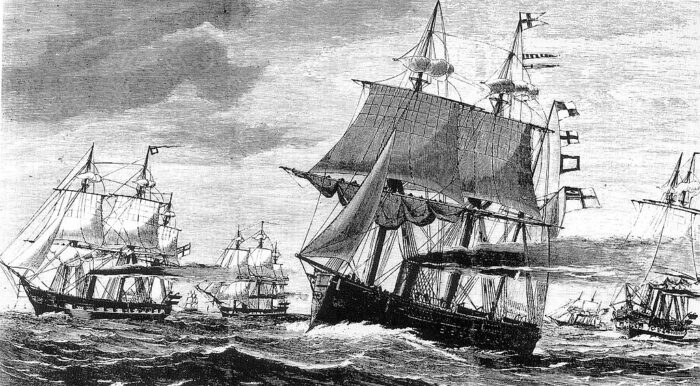
The Kaiserliches Marine (Imperial Navy) was founded in 1870, right after the the Franco-Prussian war, immortalized in the Gallery of Mirrors of the Palace of Versailles near Paris, France. The Deutsche Einigung (unification) was the product of Chancellor Alfred Von Bismarck, really its main artisan. The result for the unification of all former Kingdoms, part of the old “Holy Roman Empire” made of Romanized Germanic peoples in medieval times and consolidated under the Habsburg rule. Since the 15th century the Empire’s Prince-electors had chosen alternated at the head of the House of Habsburg but only the Duchy of Austria held the title of “Holy Roman Emperor”. This fragmented state was convenient for France and Sweden. At the eve of the Napoleonic Wars this was a conglomerate of some 300 political entities, a few belobging to the Polish-Lithuanian Commonwealth or Hohenzollern Kingdom of Prussia, Swiss cantons. This “Kleinstaaterei” (small-statery) was deplored by early pan-German nationalists and early attempts of unifications had to wait for the Dissolution of the Old Empire provoked by the Napoleonic wars.
The Invasion of the Holy Roman Empire by the First French Empire (War of the Second Coalition) already in 1798 until 1802 caused a trauma not seen since the first under Louis XIV of France. Napoleon Bonaparte forced out by the treaty of Lunéville in 1801 and Mediatization of 1803 a greater integration by abolishing most free imperial cities to be integrated into dynastic states. Württemberg and Baden were the most favored by these acquisitions and were more lenient or even supportive of Napoleon. In 1806, the invasion of Prussia and its defeat at Jena-Auerstedt in 1806 (War of the Third Coalition) had its fate sealed by the Treaty of Pressburg which stated the formal dissolution of the Holy Roman Empire and abdication of Emperor Francis II. The “Confederation of the Rhine” became instead a French client state, which authority was still divided between a hundred petty princes and counts as well as imperial knights with Several states promoted to kingdoms such as Bavaria, Saxony and Hanover. Francis II remained solely Emperor of Austria from 1804.
Still, there was a rapid rise of German nationalism under Napoleon from 1804 to 1814. The German philosopher Johann Gottlieb Fichte stated:
The first, original, and truly natural boundaries of states are beyond doubt their internal boundaries. Those who speak the same language are joined to each other by a multitude of invisible bonds by nature herself, long before any human art begins; they understand each other and have the power of continuing to make themselves understood more and more clearly; they belong together and are by nature one and an inseparable whole.
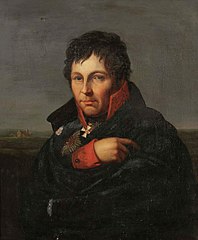 Gerhard von Scharnhorst (born 1775 in Hannover) was one of the great figures of the Napoleonic era’s war of liberation. He became chief of staff to Blücher in 1813 and for a time, of an impressed Russian Prince Wittgenstein. It was wounded at the foot in the battle of Lützen (Prussian defeat) on 2 May seeing though the French suffered significant casualties. Its wound to the foot became mortal by the fatigues of the retreat to Dresden, he passed out on 28 June 1813 at Prague when negotiating for the armed intervention of Austria. Here had a statue erected postwar by Frederick William III in Berlin and like August Neidhardt von Gneisenau (1755-1831) had many ships namesake on the prussian, then German Navy after its creation
Gerhard von Scharnhorst (born 1775 in Hannover) was one of the great figures of the Napoleonic era’s war of liberation. He became chief of staff to Blücher in 1813 and for a time, of an impressed Russian Prince Wittgenstein. It was wounded at the foot in the battle of Lützen (Prussian defeat) on 2 May seeing though the French suffered significant casualties. Its wound to the foot became mortal by the fatigues of the retreat to Dresden, he passed out on 28 June 1813 at Prague when negotiating for the armed intervention of Austria. Here had a statue erected postwar by Frederick William III in Berlin and like August Neidhardt von Gneisenau (1755-1831) had many ships namesake on the prussian, then German Navy after its creation
Long story short, the defeat of Russia encouraged many Germans to envision a Central Europe free of Napoleon’s influence and many student militias were created, such as the Lützow Free Corps, forming the basis for an insurrection. Napoleon’s 1813 campaign in the German states was returned as a War of Liberation ending in the great Battle of Leipzig (Battle of Nations). It was probably the largest, bloodiest of the entire Napoleonic wars, but ended as decisive defeat for Napoleon, leading to its abdication and exile to Elba, later return for the “100 days” until the decisive defeat of Waterloo, in which the late intervention of Blücher and its battered but still eager Prussian army, turned the tides.
The German unification was a complex and transformative process which occurred over several decades, culminating in 1871 with the proclamation of the German Empire. The Napoleonic Wars profoundly affected the German states with the dissolution of the Holy Roman Empire in 1806 and giving a sense of pan-german nationalism to former populations that shared the same culture and language.
The Congress of Vienna (1814-1815) After Napoleon’s defeat redrawn the map of Europe to restore stability and established the German Confederation made of 39 consolidated German states under the leadership of Austria as was the former Holy German Empire.
The Zollverein (Customs Union) was an Economic integration that played a crucial role in German unification. Established in 1834, it removed internal tariffs facilitated trade among member states, fostering economic cooperation and a sense of unity.
The Revolutionary Movements of 1848-1849 (spring of nations) that swept across Europe, saw the German states fueled by demands for liberal reforms, constitutional government, and national unity ultimately failing to achieve their goals but powerfully contributed to the growth of nationalist sentiment.
The Prussian Leadership became a driving force behind German unification, under the leadership of Otto von Bismarck and King Wilhelm I. Bismarck’s Realpolitik, characterized by pragmatic diplomacy and calculated use of military force, aimed to strengthen Prussia and marginalize Austria.
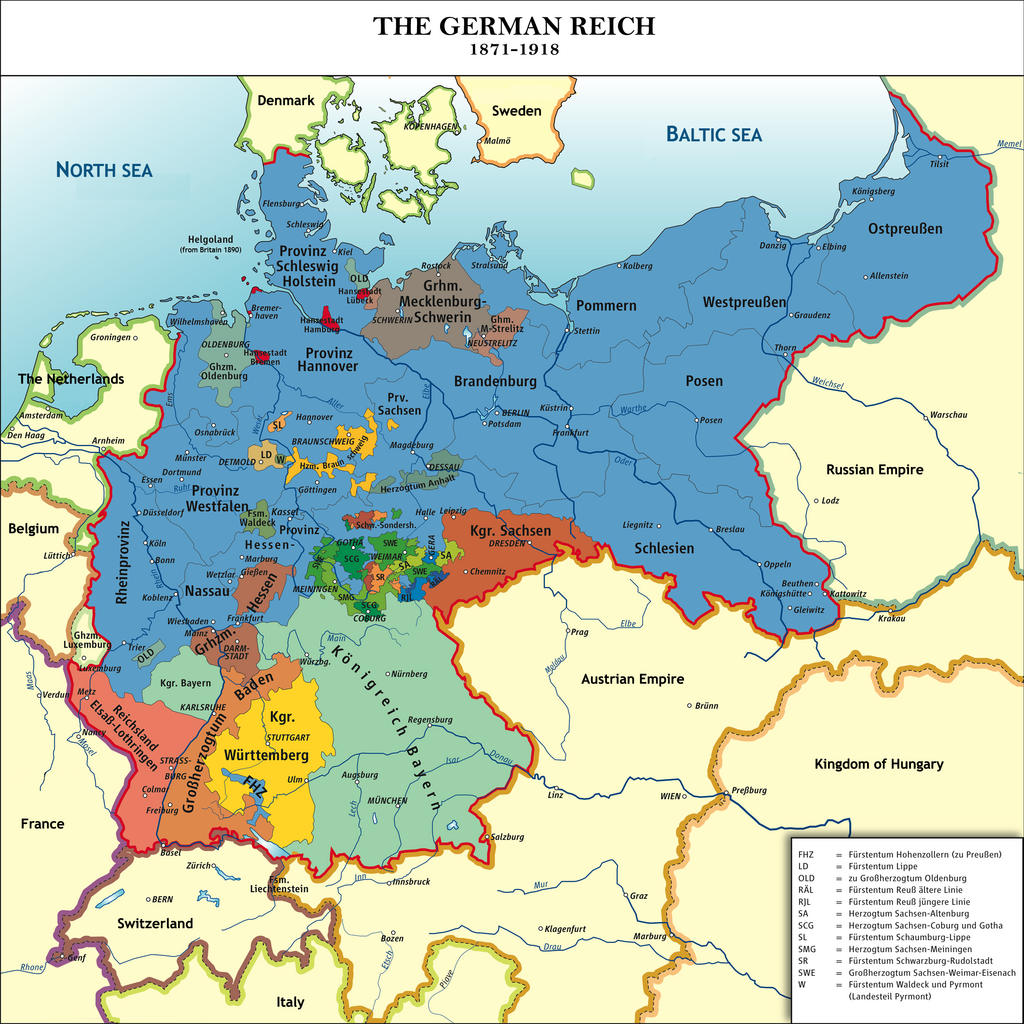
The Reich after the unification in 1871
The Wars of Unification or Schleswig-Holstein Question (1864) saw Prussia and Austria jointly defeating Denmark, gaining control of the duchies of Schleswig and Holstein, setting the stage for conflicts between Prussia and Austria and the Austro-Prussian War in 1866) or “Seven Weeks” War, saw Prussia decisively defeating Austria, which led to the dissolution of the German Confederation and exclusion of Austria from German affairs.
The Franco-Prussian War (1870-1871) was the final touch to this process, with Bismarck manipulating tensions with France to provoke a war, rallying southern German states to Prussia’s side. The war culminated in the defeat of France and the proclamation of the German Empire at the Palace of Versailles in 1871, with Wilhelm I of Prussia becoming Emperor.
With the emergence of a shared German identity and the decisive input of this statesman, paved the way for German unification under Prussian hegemony. The new German Empire becale overnight a major European power and marked a significant turning point in European history, mirrored in the south by the unification if Italy prior and loss if influence of Austrian, which became the Austro-Hungarian Empire.
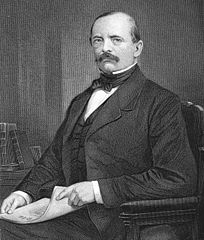 Otto Von Bismarck was a towering figure in European politics in the 19th century. Born on April 1, 1815 into an aristocratic Prussian family he studied law and pursued a career in the Prussian civil service, initially serving as a diplomat. He entered politics in the 1840s, representing Prussia in the German Confederation. His tenure as Prime Minister of Prussia (1862-1890) was marked by his commitment to the idea of a united Germany under Prussian leadership. Through a combination of diplomacy and warfare, Bismarck orchestrated the unification of Germany under Prussian hegemony. He famously used the phrase “blood and iron” to describe his approach, indicating the importance of military force alongside diplomacy.
Otto Von Bismarck was a towering figure in European politics in the 19th century. Born on April 1, 1815 into an aristocratic Prussian family he studied law and pursued a career in the Prussian civil service, initially serving as a diplomat. He entered politics in the 1840s, representing Prussia in the German Confederation. His tenure as Prime Minister of Prussia (1862-1890) was marked by his commitment to the idea of a united Germany under Prussian leadership. Through a combination of diplomacy and warfare, Bismarck orchestrated the unification of Germany under Prussian hegemony. He famously used the phrase “blood and iron” to describe his approach, indicating the importance of military force alongside diplomacy.
He skillfully manipulated diplomatic tensions and engaged in wars, such as the Austro-Prussian War (1866) and the Franco-Prussian War (1870-1871), to weaken Prussia’s rivals and strengthen its position. As Chancellor of the German Empire under Kaiser Wilhelm I he sought to consolidate the new empire’s power and maintain stability in Europe. He implemented a series of domestic policies known as the “Kulturkampf” to suppress the influence of the Catholic Church and the Social Democratic Party. He also pursued a complex system of alliances to isolate France and prevent the emergence of any threats to Germany’s security, culminating in the creation of the Triple Alliance with Austria-Hungary and Italy.
However his authoritarian governing style and conflicts with Wilhelm II led to his resignation in 1890. He retired to private life but remained influential in German politics until his death in 1898. His legacy as the “Iron Chancellor” and the “Founder of the German Empire” endures, with his diplomatic and political strategies shaping European history for decades to come.
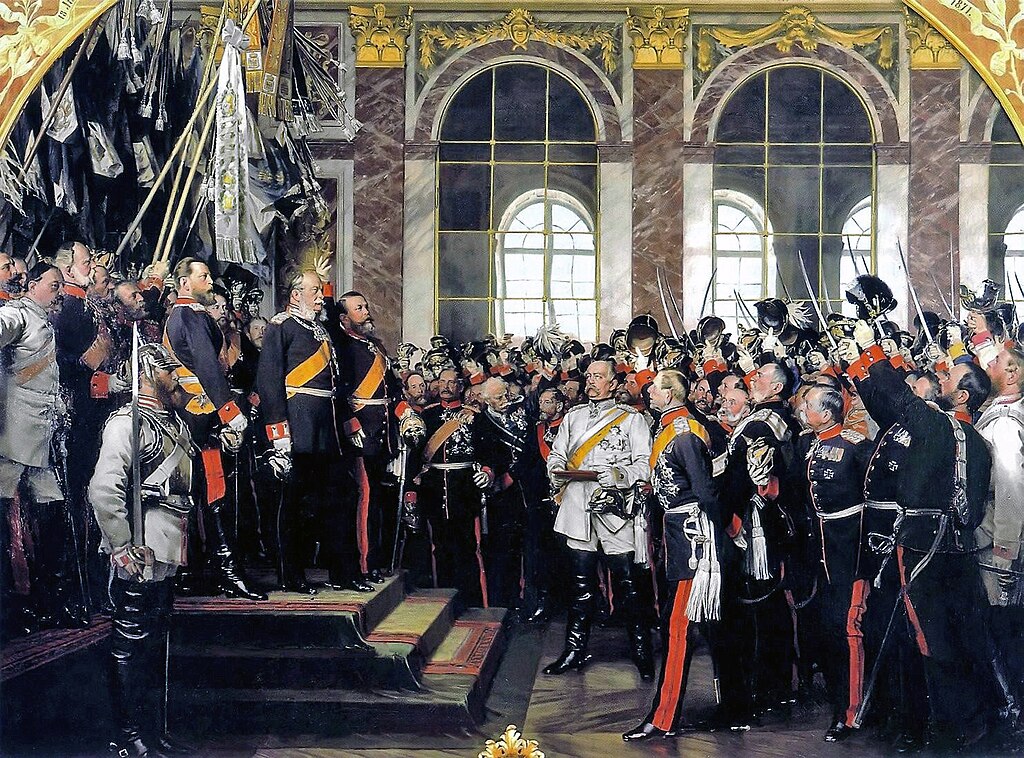
The unification ceremony and proclamation in Versailles by 18 January 1871.
The Prussian Navy in 1860
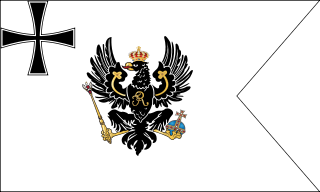 The Prussian Navy, known as the Preußische Marine or Prussian Naval Forces, was a relatively small and fledgling maritime force compared to the powerful navies of other European nations like Britain and France.
The Prussian Navy, known as the Preußische Marine or Prussian Naval Forces, was a relatively small and fledgling maritime force compared to the powerful navies of other European nations like Britain and France.
The Prussian Navy was created in 1701 from the former Brandenburg Navy after the dissolution of Brandenburg-Prussia and personal union under the House of Hohenzollern and Frederick I from Duke to King. The Prussian Navy was actiive in many wars and merchant navy in the 18th-19th centuries, but the was Kingdom’s poor child as all efforts went to the Prussian Army. The Prussian Navy was dissolved in 1867 as Prussia joined the North German Confederation, its ships absorbed into the North German Federal Navy.
The focus of Prussia’s military efforts during this period was primarily on its army, which played a central role in the wars of German unification under Otto von Bismarck’s leadership.
The Prussian Navy’s fleet consisted mainly of small warships, coastal defense vessels, and a limited number of frigates and steam-powered ships. Its primary function was to protect Prussia’s coastline and support its maritime interests in the Baltic Sea.
During this time, Prussia did not possess a significant blue-water navy capable of engaging in large-scale naval operations or power projection beyond its immediate coastal waters. Instead, the emphasis was on coastal defense, patrolling territorial waters, and protecting trade routes.
However, the 1860s marked the beginning of a period of naval expansion and modernization in Prussia, driven by the broader trend of European naval arms race and the recognition of the importance of sea power in international affairs. This laid the groundwork for the eventual development of the German Imperial Navy following the unification of Germany in 1871.
It’s important to note that while the Prussian Navy of 1860 was relatively modest, its role in safeguarding Prussia’s maritime interests and contributing to the broader military capabilities of the Prussian state cannot be overlooked, especially considering the geopolitical context of the time.
The German State and the German Navy were creations of the second half of the 19th century, In 1860 Germany was still a patchwork of independent states. Only Prussia, the most powerful of these, had a navy, and even that was being created from virtually nothing. In 1864 Prussia, allied with Hapsburg Austria, the power that still dominated Germany, defeated Denmark in Schleswig-Holstein. In this war the Prussian Navy plaved a small part in the Battle of Heligoland between Danish and Austrian steam frigates. Two years later Prussia defeated Austria at Sadowa in a ‘six weeks war’ in which her fleet was not engaged. The removal of Austrian influence left Prussia free to found the North German Federation, to which her fleet was officially transterred in 1867.
STRENGTH OF THE PRUSSIAN FLEET 1860
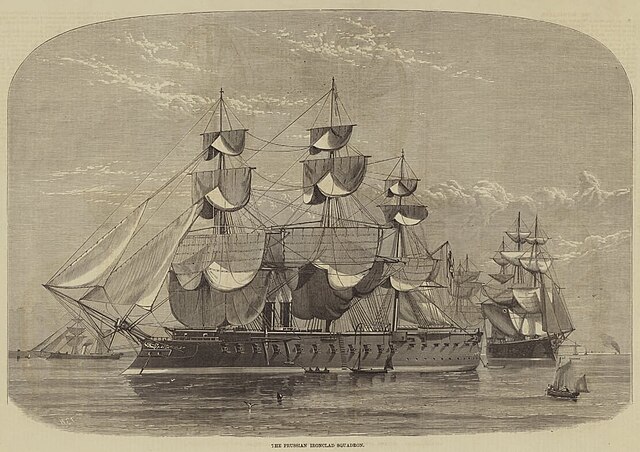
Steam corvettes: Arcona, Gazelle
Steam paddle frigates: Barbarossa (ex-Cunarder Britannia. Hulked “1865, torpedoed in experiments 1880); Danzig launched 185] at Danzig, burnt out 1869); Loreley (launched 1859 at Danzig, sold 1896)
Sailing frigates: Gefion (ex-Eckernforde, ex-Gefion, captured from the _Danes when she grounded in 1848, broken up 1891), Thetis. built for the Royal Navy in 1846, exchanged with another vessel for two steam gunboats at the time of the Crimean War, broken up 1895)
Sailing corvettes: Amazone (built 1843 and lost in a storm 1861)
Armed steam yacht: Grille (built in France 1857, later rebuilt, broken up 1920)
Transport: Mercur (built 1847, broken up 1861)
Schooners: Hela, frrauenlob {built 1853/5, scrapped in 1871, lost in 1860)
Steam gunboats: The first of the Jager and Chamdleon class were coming into service
Rowing and sailing gunboats: 42
Unarmed steamer: Royal Viktoria
TOTAL: Approximately 55 vessels mounting about 270 guns in all.
Done
To Come
- K.Whilhelm (1868)
- Arcona class Frigates (1858)
- Nymphe class Frigates (1863)
- Augusta class Frigates (1864)
- Jäger class gunboats (1860)
- Chamaleon class gunboats (1860)
The Prussian Navy in 1870
The Franco-Prussian War and consequences
The Franco-Prussian war started with a Spanish throne dispute, the Ems dispatch, and a crafty rewritten diplomatic answer telegram by Bismarck, which ended with a trap. France needed to appear as the agressor and when Napoleon III asked for a humiliating set of conditions, refused in a categoric way, her declared war indeed on Prussia on July 19, 1870. The Franco-Prussian War lasted until May 10, 1871 but military operations were quickly over. It was was a pivotal conflict between the Second French Empire, as it allowed the Kingdom of Prussia to be supported by a coalition of German states led by Chancellor Otto von Bismarck to later form the unification of the German state into modern Germany, ending centuries of divisions inherited from the Holy Roman Empire and its elected kings. The war had lasting consequences for Europe, ending as well France’s Second Empire. The war in fact pursued by the newly formed IIIrd republic and ended with a Parisoan civil war, the Commune.
Key Causes were Nationalism and German Unification under Bismarck. He wanted to unify the various German states under Prussian leadership, believing a war with France would rally the independent German states and lead to German unity. The perfect occasion were the tensions building up between France and Prussia, inflamed by a dispute over the Spanish throne, where a relative of the Prussian king was considered as a candidate. Bismarck edited a diplomatic message (the Ems Dispatch) to make it appear that the French ambassador had been insulted, which infuriated both sides.
France feared a strong, unified Germany and saw war as a way to reassert its dominance in Europe. On the operation side, the Invasion of France started with an unbalanced mobilization. Diring the recent US civil war, the Prussian took side of the Union, whereas France and UK rather took side (although never assumed displomatically) of the Confederates. Therefore the Prussians observed the way the Union managed its extensive northern railway network to ferry and supplied troops rapidly and efficiently across the territory and to the front, embedding these companies under a military command. In July 1870, the Prussian railways were organized in such a way they were able to bring to the front the bulk of three armies in a few days, whereas France seemed disorganized and only managed to bring a faction. The original French plan of an offensive right in Prussia fell apart and thonhs reversed.
Expertly led by Moltke, the Prussian and German armies quickly defeated the French forces through superior organization and tactics. Local initiative and a constant small units probing attacks followed by constant reinforcements gained decisions when the French were mostly defensive, not taking initiatives that could have returned the situation several times. Some generals, chosen for loyalty rather than merit, showed great ineptitude, such as Marshall Bazaine, comounded by poor morale. The French had the advantage of the modern Chassepot rifle, rapid firing and smokeless, and the Mitrailleuse, however the latter as used like an artillery piece and often mismanaged. But the Prussians had two advantages, the way they used their cavalry for scouting and rearguard action, and the might of their Krupp heavy artillery which smashed the French to bits in several occasions, silencing all French batteries, always short ranged.
On the naval side, the French had the advantage of a massive navy, the world’s second largest. It dwarved the Prussian Navy in a factor of 10:1. The problem however was the distance and coal concumption of French vessels at the time. No plans had been considered to deploy a fleet of coalers and training resplenishement at sea prior to the war, and Napoleon’s idea of a mass landing on the Baltic coast, forcing the Prussians to divert forces to meet the threat to the north, proved no more realistic than an attack by the Austrians in the south. The alliances that were thought out, Italy, Austria, or Denmark, never realized. Denmark in particular was vital as the French Navy counted on its ports and supplies to maintain the blockade of the Prussian coast. However there were two major issues: The blockade was performed by a noria of ships that circulated back and forth to France to recoal, and the presence was degraded, many ships passed through. More so, Prussian kept good relations with Britain, and the latter’s ships passed through. The French did not wanted to fire on these and start a war on two fronts. Thus the blockade attempt was recoignised as a failure and the French fleet went back to port, never to sail again. Instead, crews were disbanded to serve as infantry in the latter part of the war, under the IIIrd Republic.
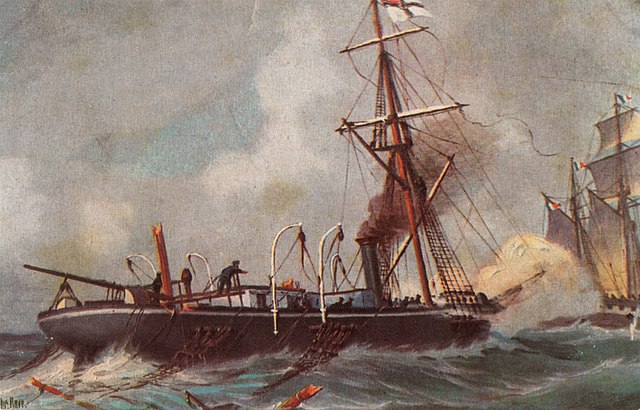
The only naval “battle” or rather encounter, was between the French sloop Bouvet and the Prussian gunboat Meteor. Called the Battle of Havana (1870). At 8 a.m. on 7 November 1870, Meteor (Lieutenant Eduard von Knorr) arrived in Havana after leaving Nassau, then a Spanish colony, Spain being neutral during the Franco-Prussian war. An hour later the French aviso Bouvet (Commander Alexandre Franquet) arrived from Martinique and spotted her in the opposite direction. Her learned that the French mail steamer SS Nouveau Monde was rerouted as fearing to be captured by the Prussian gunboat. Franquet issued a formal challenge to von Knorr, who accepted it. An old tradition that was translated as a naval duel. Both vesels were about the same in armament and tonnage, so this was seens as relatively balanced fight. Bouvet left the harbour to wait for Meteor but the latter had to wait a further 24 hours before leaving due to neutrality laws, and under escort from Spanish warships Hernán Cortés and Centinela. The latter dicated the fight was to be performed 10 miles (16 km) off Cuba, so outside territorial water.
Long story short, the duel was indecisive, both vessels tried to outmanoeuver each other and fired until both were damaged to such an extent and end ot the fight was necessary. The Prussians suffered 2 killed and 1 wounded and the French 3 wounded so this was not enough to concluded anything else but a draw, however it was incdidentally still a tactical victory for the French. Their machinery was intact and they stayed off the harbour, Meteor remaining blockaded in Havana until the end of the war, unable to prey as planned on French merchant shipping in the Caribbean.
The war ended after the Siege of Paris, despite may citiozen armies beinf constituted, none succeeded. The professional French army was no more and there was no substitute for training and good armament. The Prussian forces besieged Paris in September 1870, leading to its surrender in January 1871. It was followed by the proclamation of the German Empire on January 18, 1871 in the Hall of Mirrors at the Palace of Versailles, with King Wilhelm I of Prussia declared the first German Emperor.
As part of the treaty’s termes, the French Third Republic had to pay an enormous financial indemnity that was a burden for a decade, plus the loss of Alsace and Lorraine. The humiliation and souvenir of it not only fuelled the “revanchism” in the French side, a deep resentment contributing to future conflicts, including World War I and the harsh conditions of the treaty of Versailles.
This was War not only transformed Europe’s political landscape and shifted the balance of power, it paved the way for future conflicts in the region. For the French Navy, the impact was considerable as now the Army had priority and sucked out all budgetary reserve, which were meagre. Napoleon’s III Navy, once easily the world’s second largest, was consireably reduced and saw the borth in the 1880s of a new doctrine, the Jeune Ecole, which prioritized the torpedo as a key adavantage for asymetric warfare. Meanwuile the Prussian Navy was integrated into a new Imperial German Navy, or “Kaiserliches Marine”, which was fed by fresh finances and could grow to a larger size.
 SMS Prinz Adalbert
SMS Prinz Adalbert
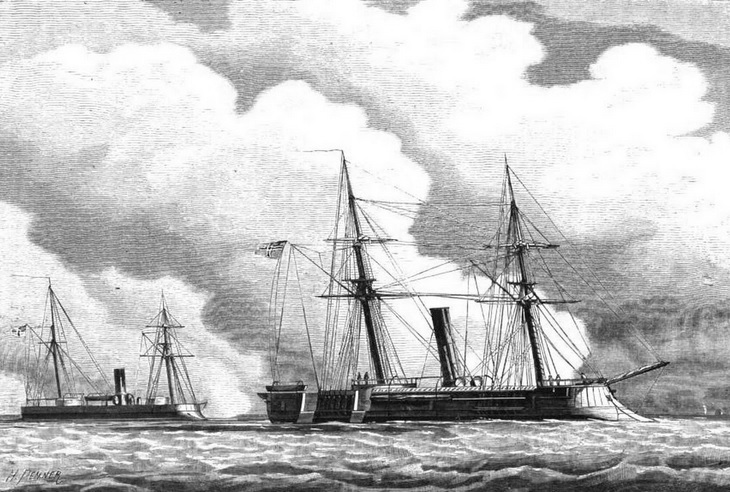
SMS Prinz Adalbert, was an ironclad ram built in Bordeaux in 1863, purchased from a Confederate order as Sphynx (a cover egyptian vessel) until the Consul General of the Union in Paris, John Bigelow, discovered the deception and pressed the French government to pressure the yard and terminate the contract. She was resold, completed and integrated in the Prussian Navy in 1866 and then passed on to the Imperial German Navy from 1870 to 1871 when she was discarded. Named after Heinrich Wilhelm Adalbert (1811-1873), Prince and Admiral of Prussia, creator of the Navy, the ship was criticized as being poorly constructted, slow, and having an artillery too ineffective against armored ships. She was refitted twice but leaked badly, she ended her career as guard ship and was decommissioned in 1871 but only BU in 1878 in Wilhelmshaven. Started before, she actually ended after Arminius, so the latter was rather the first capital ship of the Prussian Navy. Her sister ship ended in Japan as Kotetsu, resold by the Danes which also complained about her.
 SMS Arminius (1865)
SMS Arminius (1865)
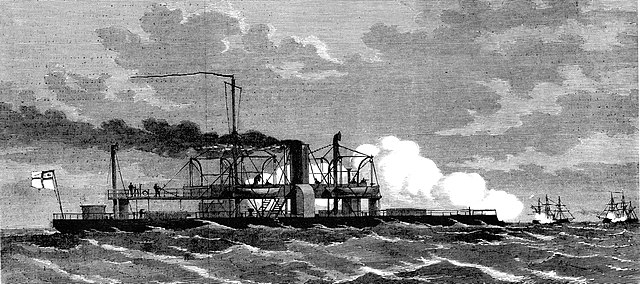
SMS Arminius, named after the ancient Suebi war leader which led a successful war against the Romans (Teutoburg Forest battle), was a second an ironclad warship of the Prussian Navy obtained in more straightforward conditions. Inlike the ram we saw, she was a turret ship designed by Captain Cowper Coles (inventor of the turret), built by the Samuda Brothers shipyard in Cubitt Town, London, as speculative effort at first. Prussia purchased her as the the Second Schleswig War against Denmark flared up. But like Prinz Adalbert she was not delivered in time. Her selling point was to have four 21 cm (8.3 in) guns, two in each revolving gun turret amidships. She had a low freeboard and was flush to allow firing these without obstruction. Arminius was used as coastal defense ship, in the Austro-Prussian and Franco-Prussian wars, trying to break the French blockade. She was withdrawn after 1871 and used for secondary roles, notably a training ship for engine-room crews and tender for the school ship Blücher until sold in 1901, BU in 1902.
 SMS Friedrich Carl (1867)
SMS Friedrich Carl (1867)
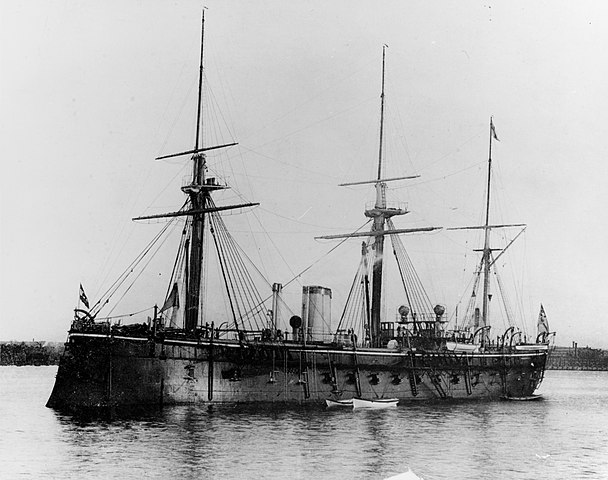
SMS Friedrich Carl was the first sea going broadside ironclad built for the Prussian Navy, ordered to the French Société Nouvelle des Forges et Chantiers de la Méditerranée shipyard in Toulon (FCM) on French Broadside ironclad plans. Laid down in 1866 she was launched in January 1867, commissioned in October. She had a long career from 1867 to 1895, modernized and converted as a training ship. In the Franco-Prussian War she was part of the main German squadron under Vizeadmiral Eduard von Jachmann. But she developed engine issues which plagued her and she made only two sorties from Wilhelmshaven to challenge the blockade. In 1873 she was sent to Spain to protect German nationals in the insurrection, seizing also three rebel vessels. She was refitted at Wilhelmshaven in the 1880s, renamed Neptun in 1902, became an harbor ship until June 1905 and stricken, scrapped in the Netherlands in 1906.
 SMS Kronprinz (1967)
SMS Kronprinz (1967)
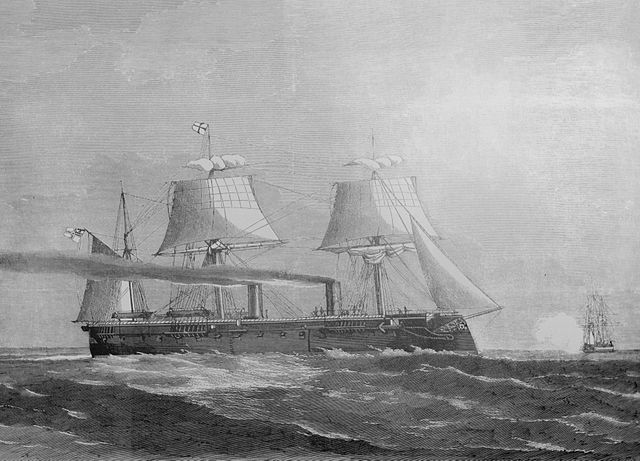
SMS Kronprinz was another German ironclad this time ordered to Britain, laid down in 1866 at Samuda Bros. shipyard, Cubitt Town, like Arminius. She was launched in May 1867, commissioned in September. She was classed as an armored frigate with sixteen 21 cm (8.3 in) guns but was armed further the coming years. In the Franco-Prussian War of she made two sorties due to Engine troubles and never saw combat. In the Imperial Navy she later became a training ship for boiler room personnel in 1901, sold for BU in 1921.
 SMS König Wilhelm (1868)
SMS König Wilhelm (1868)
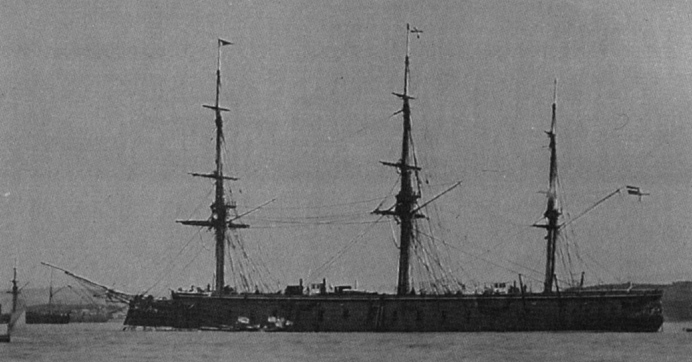
She was laid down in 1865 at Thames Ironworks in Blackwall/London for the Ottoman Navy originally, but as the latter defaulted for payment, she was purchased on the stocks by Prussia in 1867 and renamed King Wilhelm, launched on April 25, 1868. She became the largest (112 meters long overall for 9,750 tons), fastest (15 knots) and most powerful ironclad in the Prussian Navy, with no les than thirthy-three 72-pounder guns, later modified with eighteen Krupp 24 cm ring cannons, five 21 cm ring cannons.
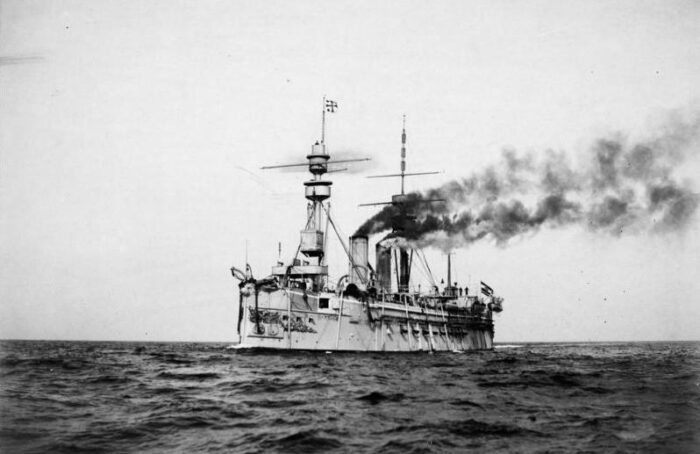
Panzerfregatte SMS Koenig Wilhelm after reconstruction in 1898
On May 31, 1878 König Wilhelm collided with Grosser Kurfürst in exercises off Folkestone (English Channel) and the latter sank. She was the flagship for the flotilla when it happened, made of the Preußen and Grosser Kurfürst sailing in two parallel lines towards Plymouth. When two small boats suddenly appeared in front of them in poot weather, König Wilhelm and Grosser Kurfürst took evasive action but in different dirtections, König Wilhelm to port, Grosser Kurfürst to starboard as the officer on watch on König Wilhelm misunderstood the order. König Wilhelm rammed Grosser Kurfürst, which had all gun ports open when she rolled over, causing instant and massive flooding.
König Wilhelm was converted into an armored cruiser in 1895–1896 but in May 1904 she was decommissioned and used as floating barracks and training ship until 1921, stricke, BU after 52 years and three German states…
 Arcona class frigates (1858-68)
Arcona class frigates (1858-68)
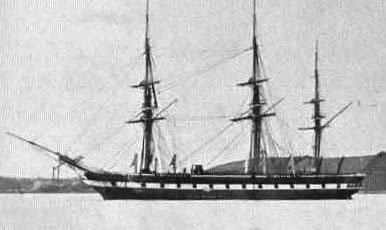
The Arcona class were five protected corvettes built for the Prussian Navy in the late 1860s and 1870s. The ships were Arcona, Gazelle, Vineta, Hertha and Elisabeth. The naming of the ships did not follow any particular pattern. They were commissioned as part of the rebuilding of the Prussian Navy and were intended to serve in regular fleet service and later on extended operational cruises in overseas areas of interest of Prussia and the German Empire. The main armament consisted of a battery of twenty eight 68-pounder guns. The ships were considered modern steam corvettes and had full sailing equipment to supplement the steam engine on long operational voyages overseas. In 1884 the ships of the class were struck from the ship register, only the Elisabeth remained in active fleet service until 1887.
 Nymphe class Frigates (1863)
Nymphe class Frigates (1863)
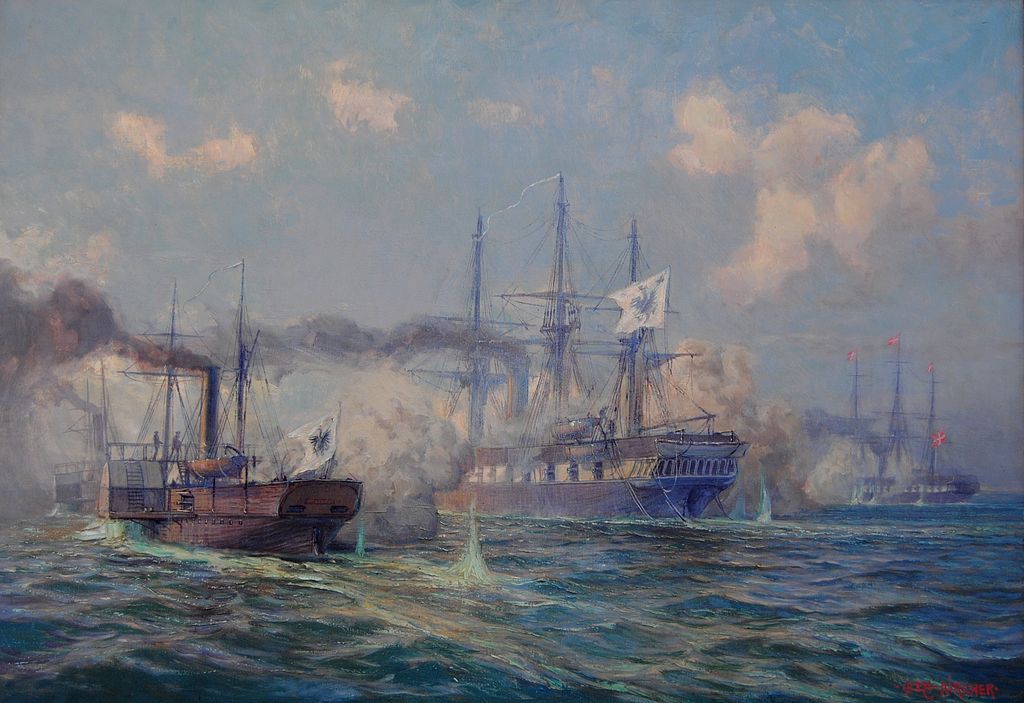
The Nymphe class were screw corvettes, first of the type to be built for the Prussian Navy in the early 1860s with SMS Nymphe and Medusa laid down in early 1862, Nymphe being completed by late 1863, work on Medusa proceeding slower due to budgetary disputes. They were part of a naval expansion program to counter the larger Danish Navy over Schleswig and Holstein. They had sixteen guns, and could reach 12 knots (22 km/h; 14 mph) under steam. The propulsion system was imported from Great Britain.
 Augusta class Frigates (1864)
Augusta class Frigates (1864)
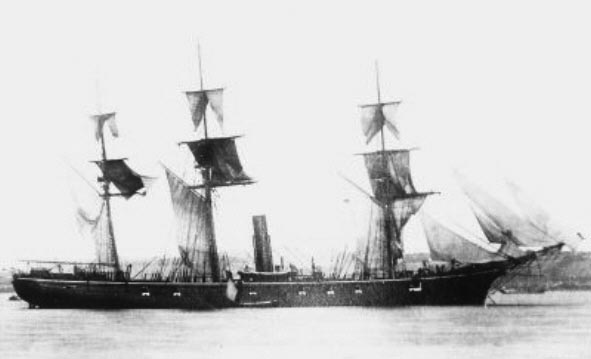
The Confederate States ordered two ships from Arman Bros, Bordeaux, for their use in the Civil War. To conceal this and prevent international complications, they were built under Japanese names Yeddo and Osakka, the former probably would have been CSS Mississippi. The delivery was prevented by an intervention of Emperor Napoleon III. The yard proposed them to the international market and they were purchased by the Kingdom of Prussia on May 13, 1864 as the German-Danish War flared up. “Yeddo” was commissioned as Augusta, and “Osakka” as Victoria. They only arrived by July 1864, after the end of the war, but had a long career.
 Jäger class gunboats (1860)
Jäger class gunboats (1860)
(Informations to come soon)
 Chamäleon class gunboats (1860)
Chamäleon class gunboats (1860)
(Informations to come soon)
Sources
commons.wikimedia.org Category:Frigates_of_Germany
Prussian_Navy
Kingdom_of_Prussia

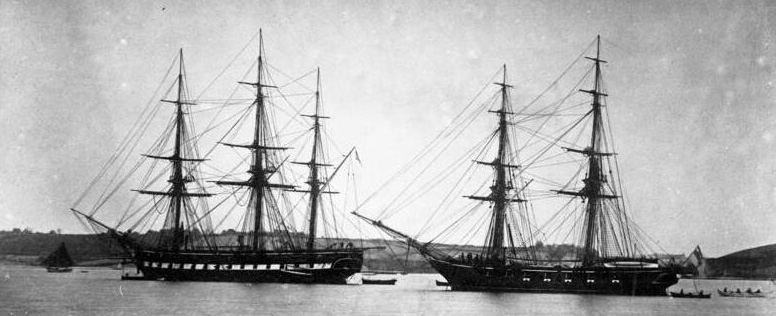
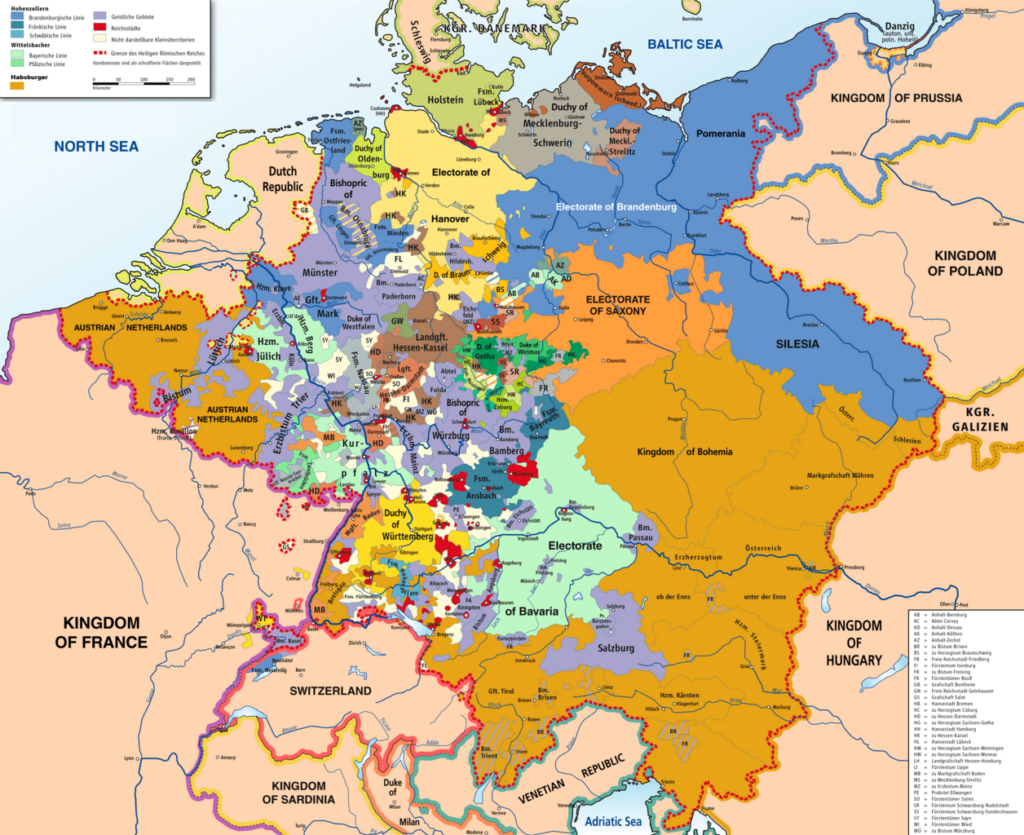
 Latest Facebook Entry -
Latest Facebook Entry -  X(Tweeter) Naval Encyclopedia's deck archive
X(Tweeter) Naval Encyclopedia's deck archive Instagram (@navalencyc)
Instagram (@navalencyc)





 Austrian Navy
Austrian Navy French Navy
French Navy Royal Navy
Royal Navy Armada Espanola
Armada Espanola K.u.K. Kriegsmarine
K.u.K. Kriegsmarine Dansk Marine
Dansk Marine Nautiko Hellenon
Nautiko Hellenon Koninklije Marine 1870
Koninklije Marine 1870 Marinha do Brasil
Marinha do Brasil Osmanlı Donanması
Osmanlı Donanması Marina Do Peru
Marina Do Peru Marinha do Portugal
Marinha do Portugal Regia Marina 1870
Regia Marina 1870 Nihhon Kaigun 1870
Nihhon Kaigun 1870 Preußische Marine 1870
Preußische Marine 1870 Russkiy Flot 1870
Russkiy Flot 1870 Svenska marinen
Svenska marinen Søværnet
Søværnet Union Navy
Union Navy Confederate Navy
Confederate Navy Armada de Argentina
Armada de Argentina Imperial Chinese Navy
Imperial Chinese Navy Marinha do Portugal
Marinha do Portugal Mexico
Mexico Kaiserliche Marine
Kaiserliche Marine 1898 US Navy
1898 US Navy Russkiy Flot
Russkiy Flot Sovietskiy Flot
Sovietskiy Flot Royal Canadian Navy
Royal Canadian Navy Royal Australian Navy
Royal Australian Navy RNZN Fleet
RNZN Fleet Chinese Navy 1937
Chinese Navy 1937 Kriegsmarine
Kriegsmarine Chilean Navy
Chilean Navy Danish Navy
Danish Navy Finnish Navy
Finnish Navy Hellenic Navy
Hellenic Navy Polish Navy
Polish Navy Romanian Navy
Romanian Navy Turkish Navy
Turkish Navy Royal Yugoslav Navy
Royal Yugoslav Navy Royal Thai Navy
Royal Thai Navy Minor Navies
Minor Navies Albania
Albania Austria
Austria Belgium
Belgium Columbia
Columbia Costa Rica
Costa Rica Cuba
Cuba Czechoslovakia
Czechoslovakia Dominican Republic
Dominican Republic Haiti
Haiti Hungary
Hungary Honduras
Honduras Estonia
Estonia Iceland
Iceland Eire
Eire Equador
Equador Iran
Iran Iraq
Iraq Latvia
Latvia Liberia
Liberia Lithuania
Lithuania Mandchukuo
Mandchukuo Morocco
Morocco Nicaragua
Nicaragua Persia
Persia San Salvador
San Salvador Sarawak
Sarawak Uruguay
Uruguay Venezuela
Venezuela Zanzibar
Zanzibar Warsaw Pact Navies
Warsaw Pact Navies Bulgaria
Bulgaria Hungary
Hungary

 Bundesmarine
Bundesmarine Dutch Navy
Dutch Navy Hellenic Navy
Hellenic Navy Marina Militare
Marina Militare Yugoslav Navy
Yugoslav Navy Chinese Navy
Chinese Navy Indian Navy
Indian Navy Indonesian Navy
Indonesian Navy JMSDF
JMSDF North Korean Navy
North Korean Navy Pakistani Navy
Pakistani Navy Philippines Navy
Philippines Navy ROKN
ROKN Taiwanese Navy
Taiwanese Navy IDF Navy
IDF Navy Royal New Zealand Navy
Royal New Zealand Navy Egyptian Navy
Egyptian Navy South African Navy
South African Navy
































 dbodesign
dbodesign